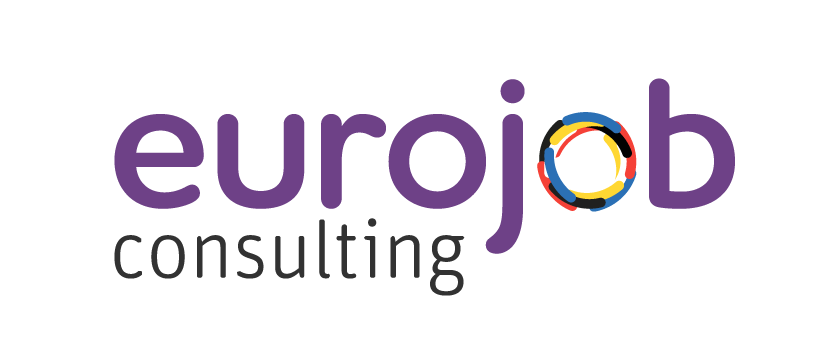Optimizing talent acquisition: Speeding up recruitment in Germany & France

The recruitment process is a critical component of any organization's success, directly impacting its ability to attract, hire, and retain top talent. We explore effective strategies to reduce recruitment time in Germany and France, leveraging technology, optimizing processes, and enhancing candidate experience to achieve a more efficient and effective hiring process.
2. Improve job descriptions and requirements
3. Streamline the interview process
4. Enhance employer branding and candidate experience

Utilizing technology and automation can dramatically cut down recruitment time by streamlining various stages of the hiring process. One of the most effective tools in this regard is the Applicant Tracking System (ATS). ATS platforms such as Greenhouse and Workable can automate job postings, resume screening and candidate communication.
By using ATS, recruiters can manage large volumes of applications efficiently. For instance, Greenhouse reports that their system can reduce the time spent on administrative tasks by up to 75 %, allowing recruiters to focus on more strategic aspects of hiring.
"Utilizing technology and automation can dramatically cut down recruitment time by streamlining various stages of the hiring process."
Adélaïde Sapelier
Recruiter
Eurojob-Consulting

Moreover, AI-driven tools like HireVue have revolutionized initial candidate assessments and interviews. These tools use artificial intelligence to analyze candidate responses during video interviews, assessing them against predefined criteria. This not only speeds up the initial screening process but also provides more consistent and unbiased evaluations. For example, Unilever implemented HireVue in its recruitment process and achieved a 75 % reduction in hiring time. The tool helped Unilever to quickly identify high-potential candidates from a large pool of applicants, significantly enhancing their recruitment efficiency.
Additionally, chatbots and virtual assistants are becoming increasingly popular in recruitment. These AI-powered tools can handle a wide range of tasks such as answering candidate queries, scheduling interviews, and providing updates on application status. For example, Mya, an AI recruitment assistant, has been shown to reduce the time to schedule interviews by 60 %. By handling repetitive and time-consuming tasks, chatbots free up recruiters to concentrate on higher-value activities like building relationships with candidates.
Another aspect of leveraging technology is the use of predictive analytics to forecast hiring needs and optimize recruitment strategies. Tools like IBM Watson Recruitment analyze historical hiring data to identify patterns and predict future trends. This enables companies to proactively plan their recruitment efforts and reduce reactive hiring, which often takes more time. IBM's predictive analytics tools have helped organizations reduce time-to-hire by up to 30 % by allowing them to anticipate staffing needs and streamline their recruitment pipelines accordingly.
Furthermore, mobile recruitment platforms are increasingly essential in today's fast-paced world. Platforms such as LinkedIn Recruiter and Indeed offer mobile apps that allow recruiters to manage their hiring process on the go. These apps provide functionalities like candidate search, communication, and interview scheduling, all accessible from a smartphone or tablet. This flexibility ensures that recruitment activities are not delayed due to the unavailability of recruiters, thereby speeding up the overall process.
To illustrate the impact of technology in recruitment, consider the case of Zappos. Zappos uses a combination of ATS, AI tools and mobile recruitment platforms to streamline their hiring process. By integrating these technologies, Zappos reduced their average hiring time by 50 %, demonstrating the effectiveness of a tech-driven recruitment strategy.
Creating clear and accurate job descriptions is essential for attracting the right candidates from the outset, which in turn reduces the time spent on screening unqualified applicants. A well-crafted job description serves as a precise blueprint of the role, outlining the responsibilities, required qualifications and desired skills. This clarity helps both recruiters and candidates, ensuring that only those who fit the profile apply, thereby streamlining the evaluation process.
A prime example of the effectiveness of detailed job descriptions can be seen with Google. Google focuses on creating thorough and well-defined job descriptions that emphasize key competencies and qualifications. By detailing specific roles and responsibilities, they attract candidates who are well-suited for the positions. This approach reduces the number of unqualified applications, allowing recruiters to focus on a smaller, more relevant pool of candidates. According to a survey by LinkedIn, 52 % of candidates indicated that the quality of the job description is a significant factor in deciding to apply. Google's meticulous approach helps in streamlining their recruitment process, ensuring efficiency and effectiveness.
Furthermore, job descriptions should be inclusive and free of jargon to appeal to a broad range of candidates. For instance, Atlassian emphasizes inclusive language in their job postings to attract a diverse talent pool. They use straightforward language to describe job duties and avoid industry-specific jargon that might deter potential applicants. This practice not only widens the candidate pool but also helps in attracting candidates who might bring unique perspectives and skills to the role.
Another key element in improving job descriptions is to highlight the company's culture and values. Candidates today are not just looking for a job; they are looking for a place where they fit in and can thrive. By showcasing the company’s mission, values, and culture, organizations can attract candidates who are not only qualified but also align with the company's ethos. For example, HubSpot includes detailed sections in their job descriptions about their company culture and the type of candidates they are looking for. This approach helps in attracting individuals who are genuinely interested in being a part of the company, thereby reducing attrition rates and improving overall job satisfaction.
In addition, job descriptions should be dynamic and continuously updated to reflect the evolving needs of the company and the industry. This practice is employed by companies like Facebook, where job descriptions are regularly reviewed and updated based on feedback from hiring managers and changes in job requirements. By keeping job descriptions current, companies ensure that they are always attracting candidates with the most relevant and up-to-date skills.
To make job descriptions more effective, it is also beneficial to incorporate specific metrics and performance expectations. For instance, instead of saying "responsible for increasing sales", a more effective job description would state "expected to increase sales by 20 % within the first year." This provides candidates with a clear understanding of what is expected and allows them to assess whether they can meet those expectations. IBM uses this approach in their job postings, which helps in attracting candidates who are confident in their ability to meet specific targets, thus improving the quality of applicants.
Additionally, leveraging SEO (Search Engine Optimization) techniques in job descriptions can improve their visibility on job boards and search engines. Using relevant keywords and phrases that potential candidates are likely to search for can make the job postings more discoverable. This practice is effectively utilized by Indeed, where job postings are optimized for search engines to attract a larger pool of qualified candidates. This increases the chances of reaching the right audience quickly and efficiently.

Streamlining the interview process is a critical step in reducing recruitment time. By minimizing the number of interview rounds and making each stage more efficient, companies can significantly cut down on the time it takes to make hiring decisions. Here are several strategies and examples of how companies can achieve this:
Reduce the number of interview rounds
One effective way to streamline the interview process is to reduce the number of interview rounds. Many companies traditionally have multiple rounds of interviews, which can be time-consuming and may lead to candidate fatigue. For instance, Dropbox successfully reduced its average hiring time by 20 % by consolidating its interview process into fewer rounds. They achieved this by integrating more stakeholders into each round, allowing for comprehensive candidate evaluations within fewer sessions.
Implement structured interviews
Using structured interviews, where each candidate is asked the same set of questions in the same order, ensures consistency and fairness. This method allows interviewers to more easily compare candidates and make quicker decisions. For example, Google uses structured interviews to maintain a high standard of consistency and to eliminate bias. By having predefined criteria and scoring systems, Google can efficiently assess candidates' qualifications and fit for the role, speeding up the decision-making process.
Utilize panel interviews
Panel interviews, where multiple interviewers assess a candidate simultaneously, can save considerable time. This method ensures that key decision-makers are involved early on, reducing the need for multiple separate interviews. Companies like Amazon frequently use panel interviews to expedite their hiring process. This approach allows for a thorough evaluation of candidates while reducing the total time spent on interviewing.
Leverage technology for remote interviews
The use of video conferencing tools such as Zoom or Microsoft Teams can facilitate quicker scheduling and conducting of interviews. Remote interviews remove the need for candidates to travel, which can speed up the process significantly. During the COVID-19 pandemic, many companies, including Microsoft, transitioned to virtual interviews, which not only maintained the hiring pace but also improved scheduling flexibility, reducing overall recruitment time.
Use pre-employment assessments
Integrating pre-employment assessments early in the process can help filter out unsuitable candidates before they reach the interview stage. Tools like Criteria Corp and HackerRank offer various assessment tests that evaluate candidates' skills and aptitude. For instance, IBM uses online assessments to screen technical candidates, which has streamlined their interview process by ensuring only qualified candidates proceed to the interview stage.
Automate interview scheduling
Automating the scheduling of interviews can save significant time and reduce back-and-forth communication. Tools like Calendly allow candidates to select interview times based on the availability of the interviewers, which speeds up the scheduling process. For example, Shopify uses automated scheduling to streamline their interview process, ensuring a seamless and quick setup for candidate interviews.
Real-time feedback and decision-making
Encouraging interviewers to provide immediate feedback and make decisions promptly after interviews can greatly reduce delays. Implementing a standardized feedback form can help interviewers quickly summarize their assessments. Facebook employs a real-time feedback system where interviewers submit their evaluations immediately after the interview, enabling quicker decision-making and reducing the overall hiring time.
Centralize interview logistics
Having a dedicated recruitment coordinator to manage interview logistics ensures that the process runs smoothly. This person can handle scheduling, follow-ups, and communication between candidates and interviewers, ensuring that there are no unnecessary delays. Companies like LinkedIn have dedicated recruitment coordinators who streamline the interview logistics, ensuring that the process is efficient and candidates are kept informed throughout.
Building a strong employer brand and enhancing the candidate experience can significantly speed up the recruitment process by attracting top talent more quickly and keeping them engaged throughout the process. A well-crafted employer brand not only draws in candidates who are a good fit but also ensures they are enthusiastic about joining the organization. Here are several strategies and examples of how companies can achieve this:
Build a strong employer brand
Developing a strong employer brand involves showcasing the company's culture, values and mission in a way that resonates with potential candidates. Companies like Salesforce are well-known for their strong employer branding. Salesforce emphasizes its commitment to innovation, customer success, and giving back to the community through initiatives like the 1-1-1 model, which dedicates 1 % of their equity, product, and employee time to charitable causes. This approach not only attracts candidates who share similar values but also enhances the company's reputation, making it a desirable place to work.
Showcase employee testimonials and success stories
Sharing employee testimonials and success stories can provide candidates with a realistic and positive view of the company. HubSpot effectively uses employee stories to highlight their supportive work environment and opportunities for growth. By featuring these testimonials on their career site and social media channels, HubSpot builds trust and excitement among potential candidates, encouraging them to apply.
Maintain clear and consistent communication
Clear and consistent communication throughout the recruitment process is crucial for a positive candidate experience. Zappos is known for its exceptional candidate communication. They keep candidates informed at every stage of the hiring process, providing timely updates and feedback. This transparency not only keeps candidates engaged but also reduces anxiety and uncertainty, leading to a more positive overall experience.
Streamline the application process
Simplifying the application process can significantly enhance the candidate experience. Lengthy and complicated application forms can deter candidates from applying. Companies like Google have streamlined their application process to make it as user-friendly as possible. They focus on gathering only essential information initially, allowing candidates to apply quickly and easily. This approach reduces drop-off rates and ensures a larger pool of qualified candidates.
Provide timely feedback
Providing timely feedback to candidates after each stage of the interview process is essential for maintaining their interest and engagement. Microsoft ensures that candidates receive prompt feedback, whether positive or negative. This practice not only respects the candidates' time and effort but also enhances the company's reputation as a considerate and professional employer.
Offer a positive interview experience
Creating a positive interview experience is crucial for leaving a lasting impression on candidates. This includes being respectful of their time, providing a welcoming environment and ensuring that interviewers are well-prepared. Airbnb focuses on making the interview experience enjoyable and reflective of their company culture. They provide candidates with detailed information about what to expect, ensure interviews are conducted in a friendly and professional manner and follow up with personalized thank-you notes.
Showcase career development opportunities
Highlighting opportunities for career growth and development can make the company more attractive to top talent. LinkedIn emphasizes their commitment to employee growth by showcasing their learning and development programs, mentorship opportunities and career advancement paths. By promoting these aspects, LinkedIn attracts candidates who are eager to grow and develop within the company, thereby reducing the time spent on finding motivated and ambitious candidates.
Utilize social media and online presence
Maintaining an active and positive presence on social media and other online platforms can enhance employer branding and reach a wider audience. Companies like Spotify effectively use social media to share behind-the-scenes glimpses of their workplace, employee stories, and company achievements. This not only attracts potential candidates but also keeps current employees engaged and proud of their workplace.
Conduct candidate surveys
Regularly conducting candidate surveys can provide valuable insights into the recruitment process and highlight areas for improvement. Cisco uses candidate experience surveys to gather feedback from applicants about their recruitment process. This feedback helps Cisco continually refine their process to ensure a positive and efficient experience for all candidates.

Jérôme Lecot




